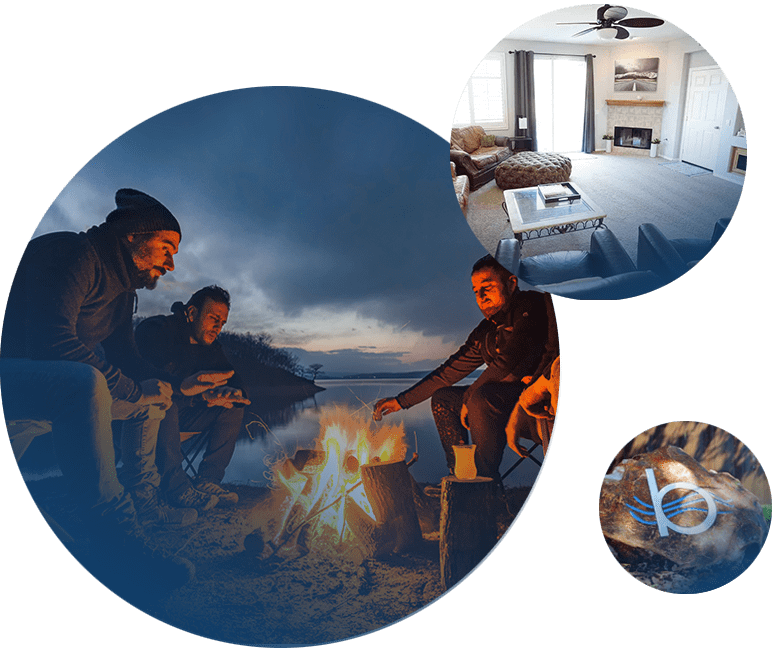


Xylazine, a drug called “Tranq dope”, is being found more frequently in drug seizures in San Diego. For the people who use this drug, there are new dangers. It’s often found in fentanyl and is also used as an additive in other opioids like heroin. It’s a disturbing new challenge for people trying to overcome opioid use disorder.
In recent years, xylazine has been found in large drug seizures across the US. Usually, it is added to drugs such as heroin or Oxy. While few overdoses on the West Coast have detected the drug, San Diego authorities say xylazine has been found in seized drugs 23 times in the last two fiscal years between San Diego and Imperial counties. While this isn’t indicative of widespread use, it’s a growing pattern that concerns authorities.
On the East Coast, including Pennsylvania and Rhode Island, xylazine has quickly established itself as a drug of concern, added to drugs like fentanyl to create a more substantial buzz. Just like fentanyl, it’s being added to other drugs without people knowing. More than 40% of street drug samples tested in Rhode Island contained xylazine, according to recent research.
Xylazine is a drug that has never been approved for human use. Its main purpose is the sedation of large animals such as horses. It is technically a muscle relaxant for horses. In the past few years, the drug has been making major headway on the East Coast, where it is added to other drugs. It has been found in heroin, fentanyl, and cocaine.
The sedation caused by it can lead to an overdose death. If a person who has taken fentanyl also has taken xylazine, it may be much harder to reverse the overdose. Naloxone, an opioid-overdose reversal drug, does not work in reversing xylazine toxicity. The person who overdoses may have the opioids reversed but not wake up. It can cause coma and death when a person overdoses on it.
Xylazine is a drug that is still being understood in the medical community. There are a few things that the DEA has told medical providers about it, such as the fact that the “high” starts within minutes and lasts for hours.
Inside a person’s body, it relaxes muscles by decreasing the release of norepinephrine and dopamine in the central nervous system. It has a profoundly sedating effect.
People high on xylazine may experience blurred vision, low blood pressure, and sleepiness/drowsiness/nodding out. It can cause hyperglycemia (high blood sugar) and can be dangerous for people with medical conditions affected by blood sugar.
Xylazine can cause skin disease. People often end up with painful, easily infected skin ulcers when they’ve taken a drug containing it. The wound usually isn’t in the same place they injected it and can still occur if they didn’t inject it, making it a hazard for all accidental users.
On the East Coast, especially in places like Pennsylvania, where xylazine use has become endemic, users have become addicted to the drug. This means they only seek out opioids containing it. When they decide to get sober, this adds an extra challenge because they will typically experience withdrawal symptoms that Medication-Assisted Treatment can’t suppress. Treatment centers are still learning to cope with the challenge but are ready to help anyone who wants to get sober, regardless of the challenges. Medications still exist to help minimize withdrawal symptoms.
If you or somebody you love is looking for a sober living situation, we're here to help! Our sober homes feature community, safety, and structure as you learn to live life on its terms. Everyone deserves the opportunity to stay sober. Give yourself a chance and learn about our programs by calling 760-216-2077.
San Diego has kept in line with a disturbing trend; overdoses and opioid use is up among younger people, and overdoses are a frequent cause of 911 calls. In fact, according to the San Diego Police Department, officers responded to 100 more overdoses in 2020 than the prior year. And although people are staying home more, addiction isn’t taking a break.
Arrests of people on opioid-related offenses related to overdose phone calls are up by nearly fifty percent. (Police sometimes arrest users who remain with a person who has overdosed if they possess drugs or if they or the overdose victim has outstanding warrants.)
Opioids are a popular street drug but also highly addictive. There has been a surge in addiction as the pandemic has drawn on. Users of opioids may have evolved from other addictions or gateway drugs. Some people become addicted to a prescription from a doctor, while others purposefully will misuse a drug to numb or entertain themselves. Some people who overdose have relapsed from a long-term stint in recovery.
Boredom, loneliness, and anxiety during the pandemic have caused an uptick in almost all addictive behaviors. People are using more drugs to self-medicate troubling feelings. Many people have felt despair and depression with economic loss. All of the above can be factors contributing to substance use disorders.
People in their 20’s and 30’s have been dying at a higher rate during the pandemic, however, experts note that these numbers were already rising in late 2019. Overdose victims from opioids in the past year usually have had fentanyl in their bloodstream, a drug that is fifty to one hundred times as strong as morphine.
While some people use fentanyl on purpose, many users are unknowingly exposed to it through illicit drugs. Some dealers will add it to cocaine or pass it off as Oxycontin. Because it is harder for drugs to flow across borders due to the COVID-19 pandemic, drug dealers have been fentanyl to add “punch” to the drugs they sell.
People who relapse on opioids and other narcotics are statistically more likely to overdose. There are many reasons for this. For one thing, many people, especially during COVID-19, are using opioids all alone. If they overdose, nobody can call for help for them. People who have abstained for years will also use the amount of the drug they used to use, believing they will still tolerate it. Instead, they overdose because the drug is too strong.
Preventing relapse saves lives. A good aftercare program or sober living program can help you or your loved one stay sober in the long-term and learn to live life on life's terms without the use of substances.
If you or somebody you love has a problem with alcohol or drugs, help is available! While COVID has changed some procedures for starting the treatment process, recovery is still very much open to everyone!
Relapse prevention is another important component of staying sober. A structured, caring, sober living environment helps many people get sober and achieve long-term recovery.
At By The Sea Recovery, we offer the best sober living experience in California, creating a place of growing, learning, and respect for everyone who walks through the doors. We want to help you stay sober and offer camaraderie, structure, and tools for your journey. Get in touch by calling us at 760-216-2077. We’re happy to answer questions!
It's great to hear positive news and an emphasis on sobriety as opposed to the turmoil cause by substance use disorder. We salute and wish the best to those public figures seeking help and leaving a path of hope for those that might never hear about the way out and the success stories.
http://abcnews.go.com/Entertainment/bobby-brown-finally-clean-sober/story?id=43244157
By the Sea recovery is San Diego's premiere sober living home. Call us for help & answers on how to live in a great sober house.
"I buried a child to drug addiction," Fiorina said.
In a presidential election coming up, the United States becomes a little more aware of an epidemic with Carly Fiorina opening up about her daughter's battle with addiction. A long time stigma making its way to the spotlight in order to have solutions, options and plans ready to be implemented and placed in our healthcare system. Her vulnerability is a gift to the over 20 million struggling with substance use disorders in the United States.
The new face of addiction is no longer the cliche brown bag holding homeless adult. Its in the suburbs, in college forms and in the comfort of a family home. As the stigma of substance use disorders begins to be a part of the vocabulary of community, the shock of overdoses will continue to cause intimidation and fear from agencies towards an education and preventive task. Cities such as New York seem to be leading the way in Narcan training (naloxone), placing power in non medical and lay responders to avoid overdoses all together. The shift from finding the fault to understanding the nature is the big first step.
http://www.9news.com/story/news/health/2015/08/11/heroin-addiction-colorado/31508123/
Eminem Shares Previous Struggle With Drugs That Pushed Him To 230 Pounds : LIFE : Tech Times
The brave rapper and entertainer Eminem opens up abut his demons, difficulties and journey to health. We commend this talented artist that could inspire the over 22 million people in recovery from substance use disorders in the United States. We forget it affects everyone no matter our backgrounds, but that the vulnerability and honesty of this amazing artist can bring life to those not seeing beyond the haze of today. Thank you Eminem.
Hillary Clinton's team seems to be placing a higher level of attention to substance use disorders, formerly known as addiction and alcoholism, with the heroin and methamphetamine epidemic in rural America. Seems like awareness is at senate level and permeating the verbiage of the candidate, hoping that their words get placed into action. What's great is that, apart from using google hangouts (pretty tight to be staying current and involving multiple brainstorming), their focus is on decriminalizing lower drug offenses, placing a priority for mental health and attention to treatment rather than incarceration. Great step guys. Now go do it.
(adsbygoogle = window.adsbygoogle || []).push({});
The stories of hope in recovery from addiction and alcoholism, presently known as substance use disorders, are very real. The impact of school on the turnaround is very real and rarely heard (as well as employment). The challenge is finding these colleges that are willing to give individuals second chances as well as accommodating programs to fit someone hurting from alcohol abuse or drug addiction right into their classes. Heres a thumbs up to those opening their doors, for those who change will impact thousands in their new journey.
http://digital.vpr.net/post/drug-addiction-college-graduation-turnaround-story
And we never think we hurt others while we go around our own problems, specially in families. In Addiction, the confusion is intensified with the lies and the fear to communicate what's real: there's a serious problem with alcohol and/or drugs and believing that circumventing around members, many times the younger ones, will be alleviating or a less heavy burden. Its worse. This beautiful article depicts the story of a son's journey with the problem of a father. To those thinking that alcoholism or drug addiction is only one persons problem, we say think again.
http://www.redeyechicago.com/opinion/redeye-addict-father-death-20150519-column.html
(adsbygoogle = window.adsbygoogle || []).push({});
(adsbygoogle = window.adsbygoogle || []).push({});
Families who have lost a loved one to substance use disorders, formerly known as alcoholism and addiction, are tired of being tired. Where do they go to? How many times can someone go to treatment? What if you can't afford it? Families are coming out. The pain is greater than the stigma. It is no longer moral. It is no longer good versus wrong. Its simply needs to be spoken about. With an opiate epidemic in the United States, its coming back to the hands of those hurting and they are aking for anwers.
http://detroit.cbslocal.com/2015/04/27/woman-who-lost-grandson-to-heroin-takes-on-drug-addiction/
